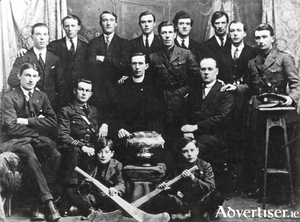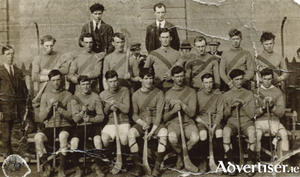Search Results for 'Stephen Jordan'
6 results found.
Gaillimh abú

It was inevitable in a county which was a stronghold of hurling that women would eventually want to play the game like their male counterparts. The game of camogie has been played in Galway since the early 1900s. Experimental rules for the female game were drawn up in 1903 and the first public match took place that year, and so the game of camogie was officially launched.
Gaillimh abú

It was inevitable in a county which was a stronghold of hurling that women would eventually want to play the game like their male counterparts. The game of camogie has been played in Galway since the early 1900s. Experimental rules for the female game were drawn up in 1903 and the first public match took place that year, and so the game of camogie was officially launched.
A history of camogie in Galway
As in hurling in 1887, Galway took part in the first All-Ireland senior camogie final in 1932 which was played in Galway Sportsground.
The Galway City Challenge Hurling Cup 1920

As nationalist sentiment was rising in the early years of the last century, a new generation of GAA officials emerged who were zealous in their belief in the transformative power of the GAA and they saw themselves as engaged in a project of national liberation. Some GAA tournaments were staged as part of a pro-Boer campaign. Police reports noted: “The ambition it seems to get hold of the youth of the country and educate them in rebellious and seditious ideas,” a somewhat hysterical interpretation of the GAA ban on foreign games.
A historic Galway hurling team

“We are blessed with the most wonderful field game in the world. No sport is more skillful, more graceful, more revealing of those who play it, and nobody who has seen hurling played by its greatest exponents can be in any doubt what beauty is, or graciousness or courtesy either.
Galway in the weeks leading up to the Rising

On Tuesday 25 April 1916, Galway became the only county outside of Leinster to take up arms against the British state during the Easter Rising. In fact, only three parts of provincial Ireland participated in the Rising: Enniscorthy in county Wexford; Ashbourne in north county Dublin; and county Galway, where several hundred rebels took over 600 square miles of the east of the county between Tuesday 25 April and Saturday 29 April. Commemorative documentaries and history books pay little attention to the Galway Rising with the focus tending to be on the more dramatic events that took place in Dublin, but Galway’s Rising was an important part of the story of the Easter Rising; and the story of the hundreds of brave Galway men who stood up to the British Empire in April 1916 deserves to be told in detail. In this series of five articles, FERGUS CAMPBELL will explain why Galway rose when so many other parts of provincial Ireland did not, and he will also tell the story of what happened in Galway during the Rising, and the impact that the Rising had on Galway society. This account is based on many documents, police reports, newspaper accounts and memoirs but most of the quotations are derived from the witness statements that Galway rebels made to the Bureau of Military History during the 1940s and 1950s, and these can be read online.

